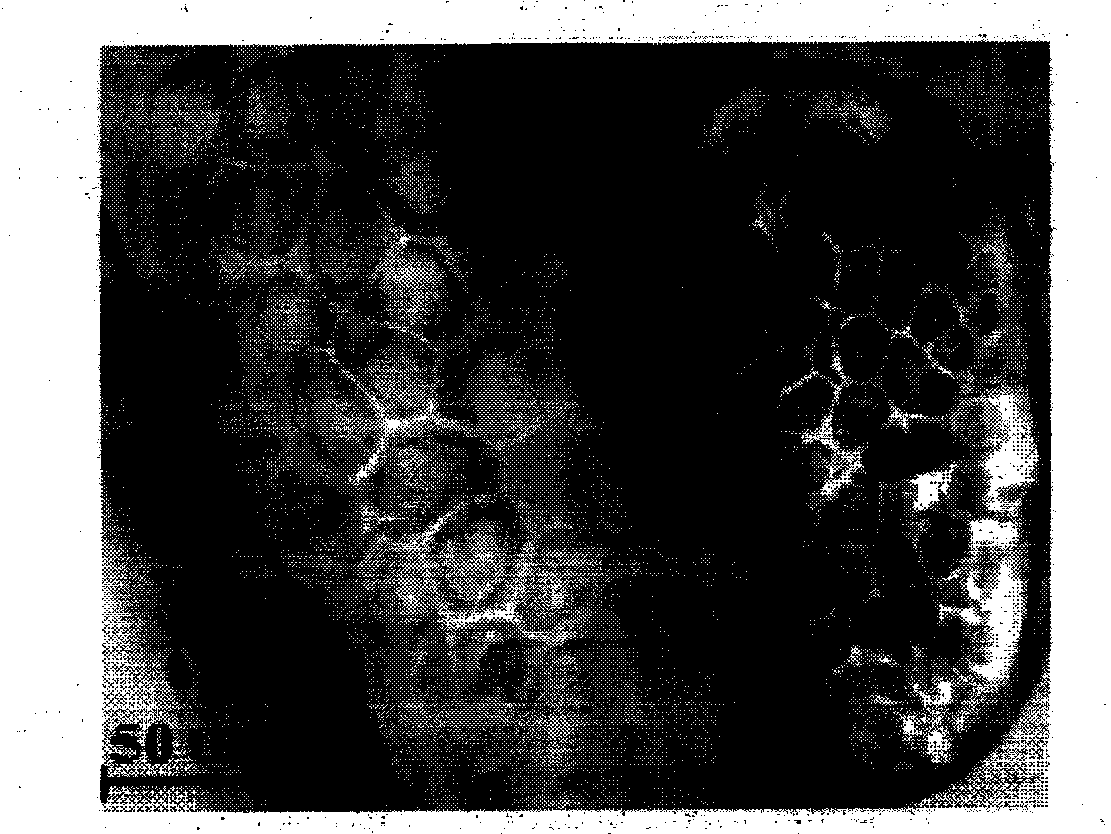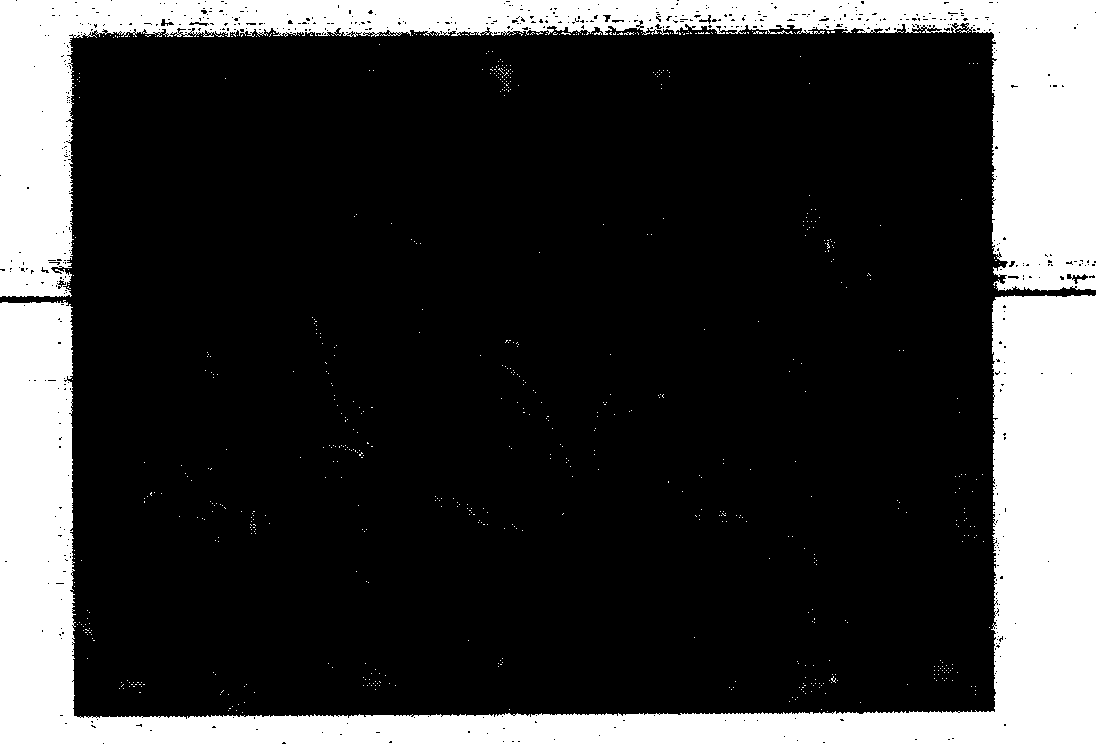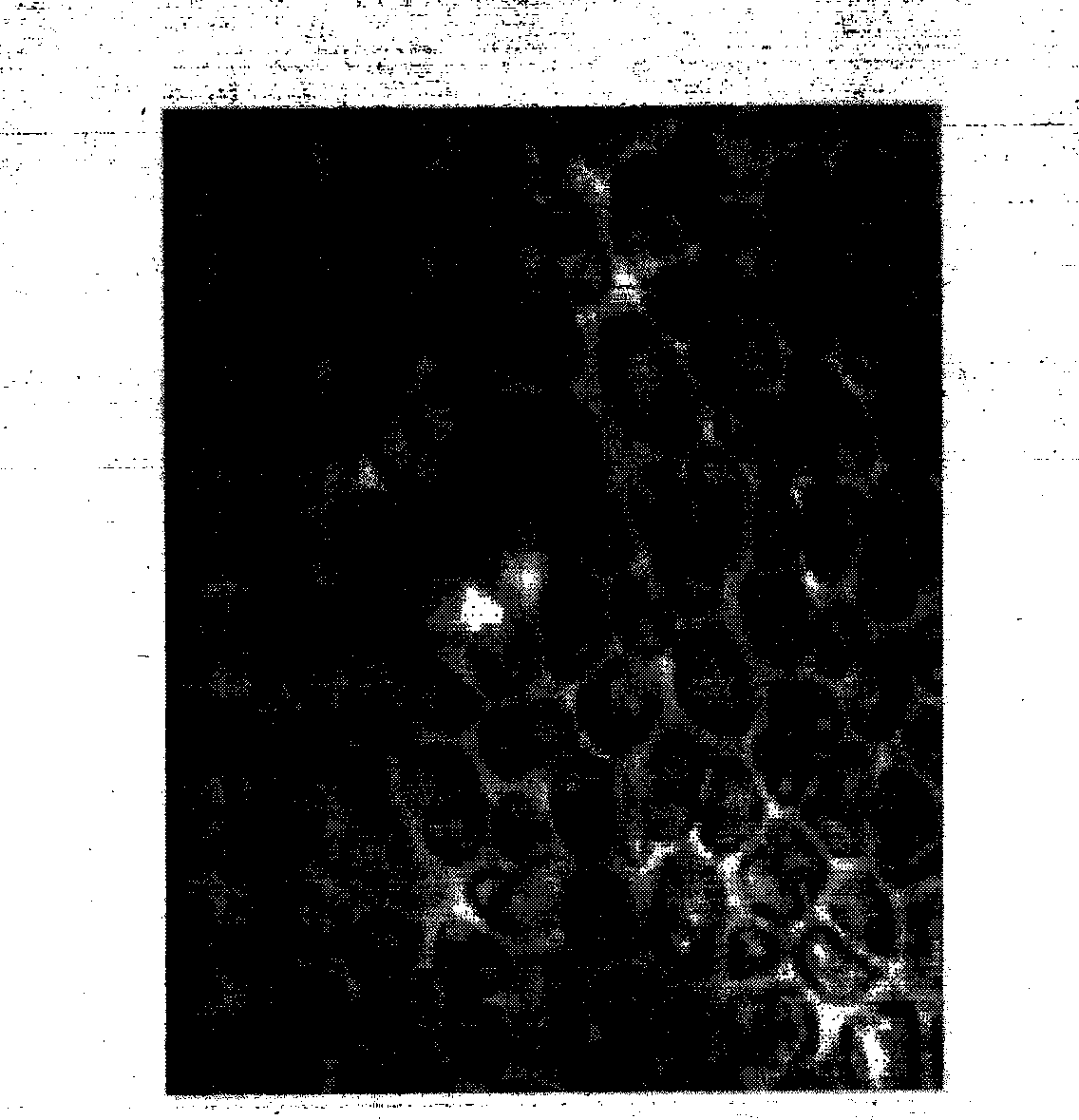Seedling breeding method using asparagus spores
A technology of asparagus and spores, applied in the field of marine algae reproduction, can solve the problems of germplasm degradation, degradation, genetic variation, etc., and achieve the effect of alleviating the degradation of germplasm, solving the problem of provenance, and accelerating the speed
- Summary
- Abstract
- Description
- Claims
- Application Information
AI Technical Summary
Problems solved by technology
Method used
Image
Examples
Embodiment 1
[0038] A propagation method of asparagus, comprising the steps of:
[0039] 1) Spore collection
[0040] The collection box 6 is filled with seawater, the lower water layer is placed with a blank net curtain 4, and the mature asparagus 7 is placed on the upper water layer by horizontal clamping seedlings and is completely covered by seawater. The top of the collection box 6 is covered with a preservative film 5 Sealing, tracking and counting the spores on the net curtain 4 every 4 hours, under a microscope with a magnification of 10*10, the density of spores on each net curtain can reach 40-50 per field of view;
[0041] 2) Indoor cultivation
[0042] The net curtain with spores after step 1) is cultivated indoors for 1 week to one month, the temperature of cultivation is 20-25°C; the salinity is 30‰; the light intensity is 1000-4500lx, until the spores grow into discs or just begin Upright growth, the culture conditions in the previous week were 20°C, 1000lx, 30‰, 12 / 12h / h;...
Embodiment 2
[0048] The preparation method of net curtain 4 is:
[0049] 1) Make a rectangular net curtain frame 2, and fix a hanging ear 3 on each of the four corners of the net curtain frame 2;
[0050] 2) Wrap the cotton rope 1 on the net curtain frame 2 to make a net curtain 4;
[0051] 3) Apply the resin evenly to the front of the net curtain 4, and place it at 60°C for 6 hours or at room temperature (20-25°C) for 24 hours;
[0052] 4) After the resin on the front side of the net curtain 4 is solidified, apply resin on the reverse side according to step 3) and wait for it to solidify;
[0053]5) Soaking in seawater: Soak the net curtain 4 after step 4) in seawater for 4-6 days.
[0054] On the basis of the above scheme, the resin is prepared by mixing epoxy resin and polyamide resin in equal mass, adding 2 to 3 times the volume of industrial alcohol to dilute, and mixing evenly.
[0055] in:
[0056] Epoxy resin: produced by Zhonghua Group Jinan Resin Factory or Sino-foreign joint...
Embodiment 3
[0061] Selection of mature asparagus and daily release of spores:
[0062] Select mature tetraspores or fertilized and mature fruit sporophytes. When the algal body is mature, it can be judged according to its shape under the microscope, as follows figure 1 As shown, the mature fruit sporophyte parasitized on the female gametophyte and protruded from the surface of the algal body; as figure 2 As shown, the internal photo of the mature fruit sporophyte, the circle is the mature fruit sporophyte; as image 3 As shown, mature tetrasporocytes, the bright red surface is tetrasporangia.
[0063] The daily release law of spores: such as Figure 4 As shown, it took 7 days for mature fruit spores to disperse from the beginning to the end of dispersal. On the fourth day, a large amount of spores were released, and the amount of spores released was about 2000 spores per cystic fruit. Such as Figure 5 As shown, the release of tetrasporocytes lasts for about 10 days, begins to relea...
PUM
| Property | Measurement | Unit |
|---|---|---|
| Length | aaaaa | aaaaa |
Abstract
Description
Claims
Application Information
 Login to View More
Login to View More - R&D
- Intellectual Property
- Life Sciences
- Materials
- Tech Scout
- Unparalleled Data Quality
- Higher Quality Content
- 60% Fewer Hallucinations
Browse by: Latest US Patents, China's latest patents, Technical Efficacy Thesaurus, Application Domain, Technology Topic, Popular Technical Reports.
© 2025 PatSnap. All rights reserved.Legal|Privacy policy|Modern Slavery Act Transparency Statement|Sitemap|About US| Contact US: help@patsnap.com



